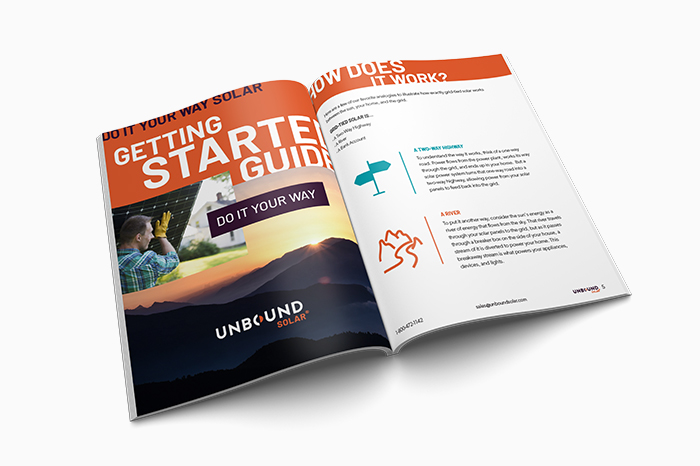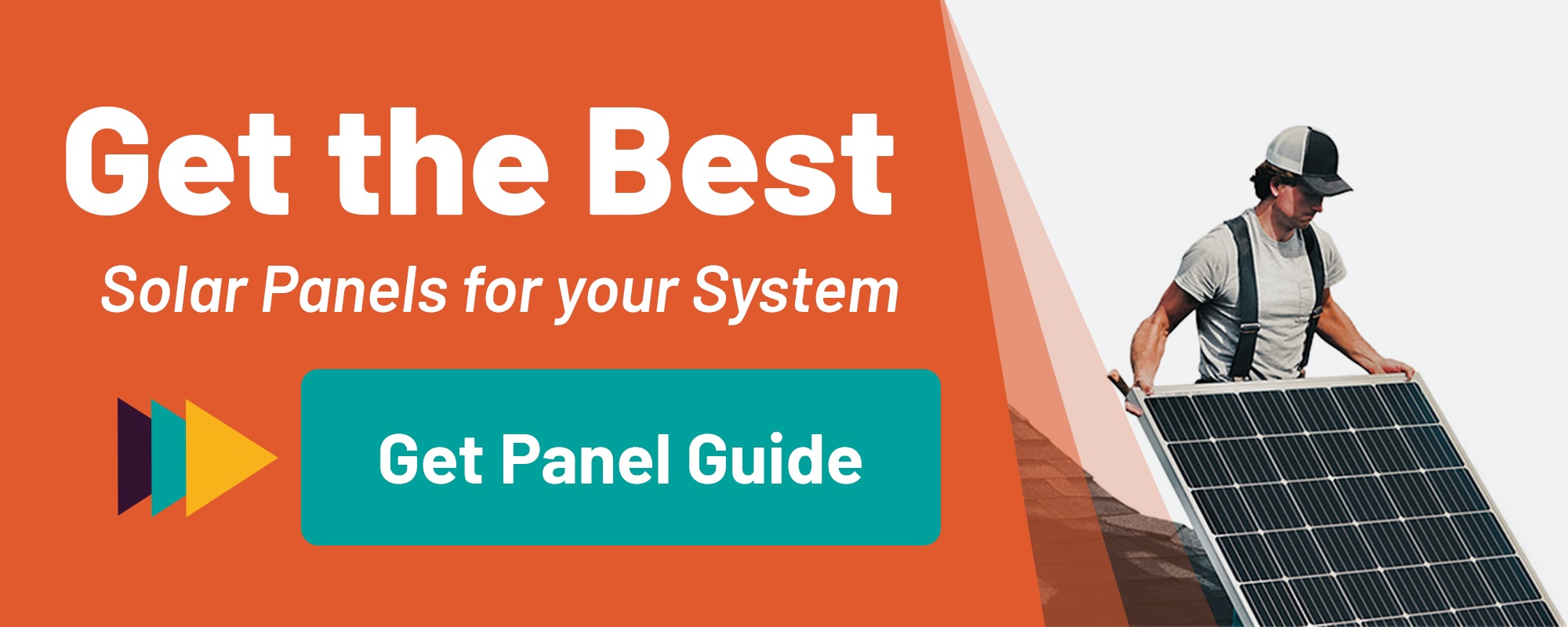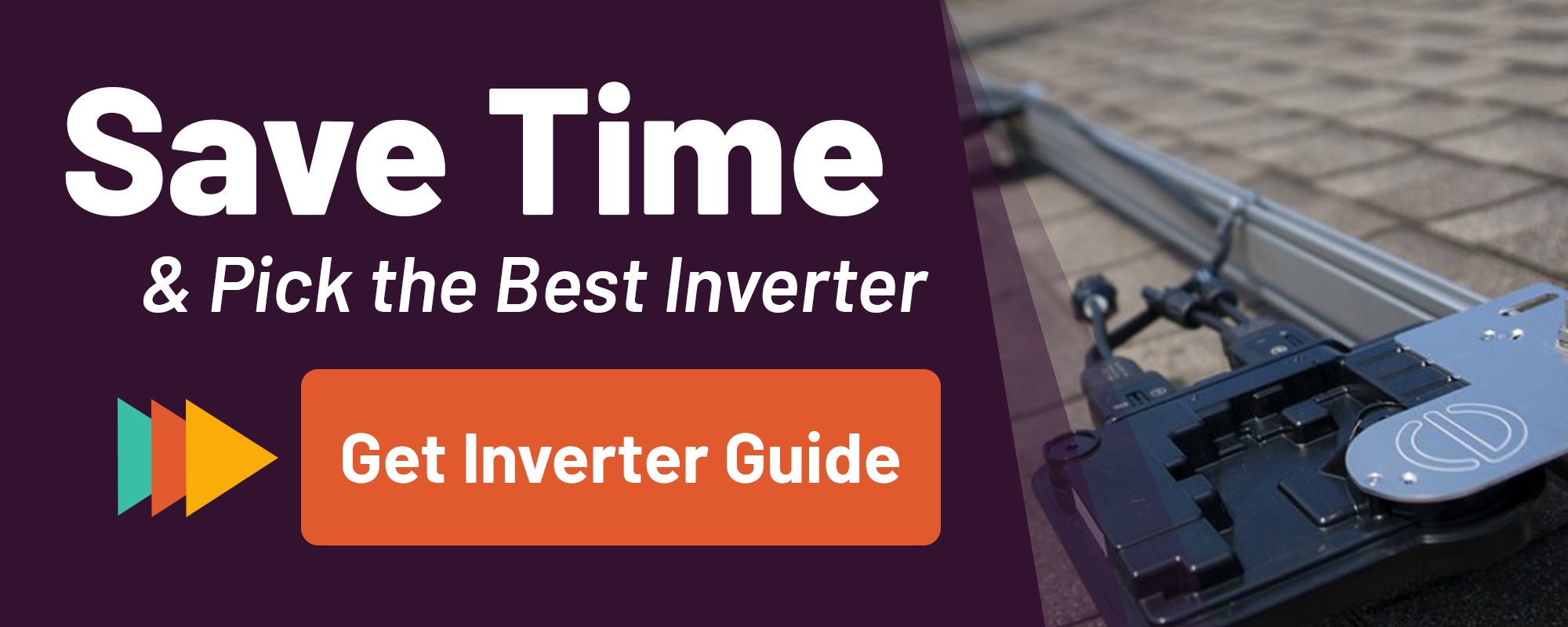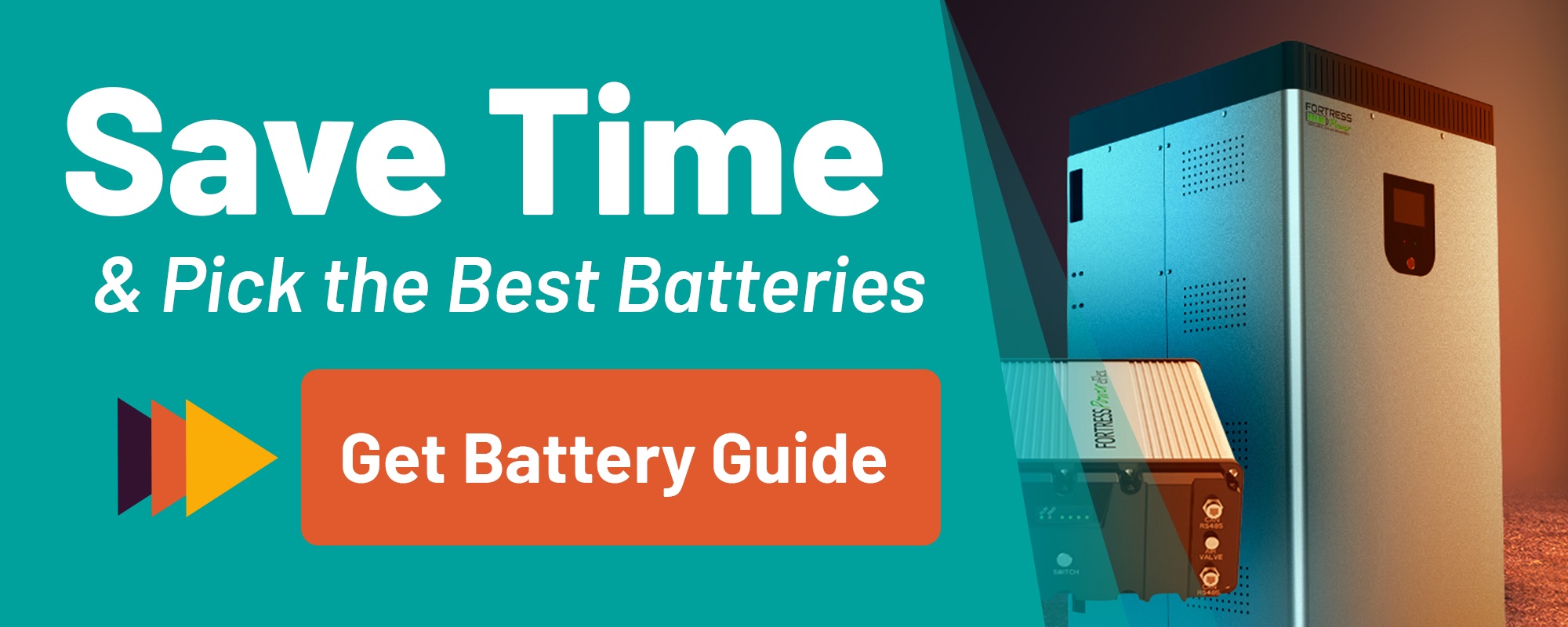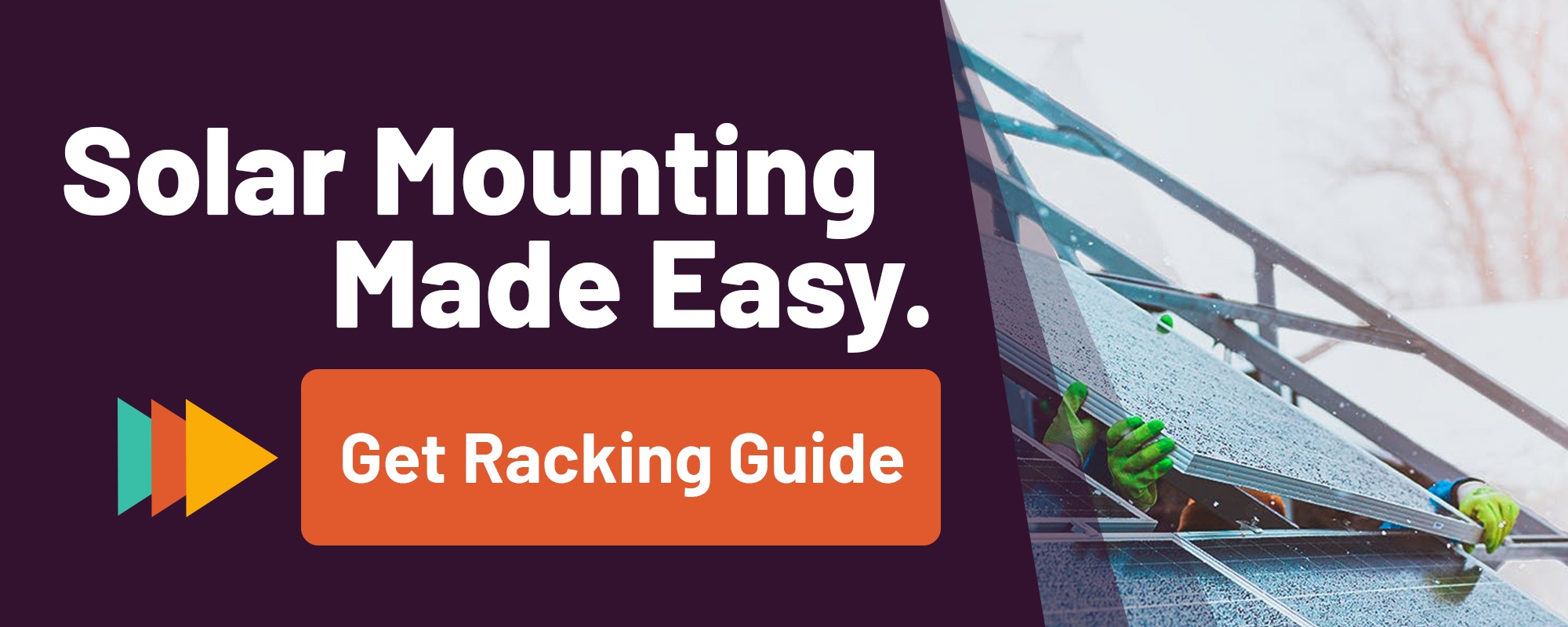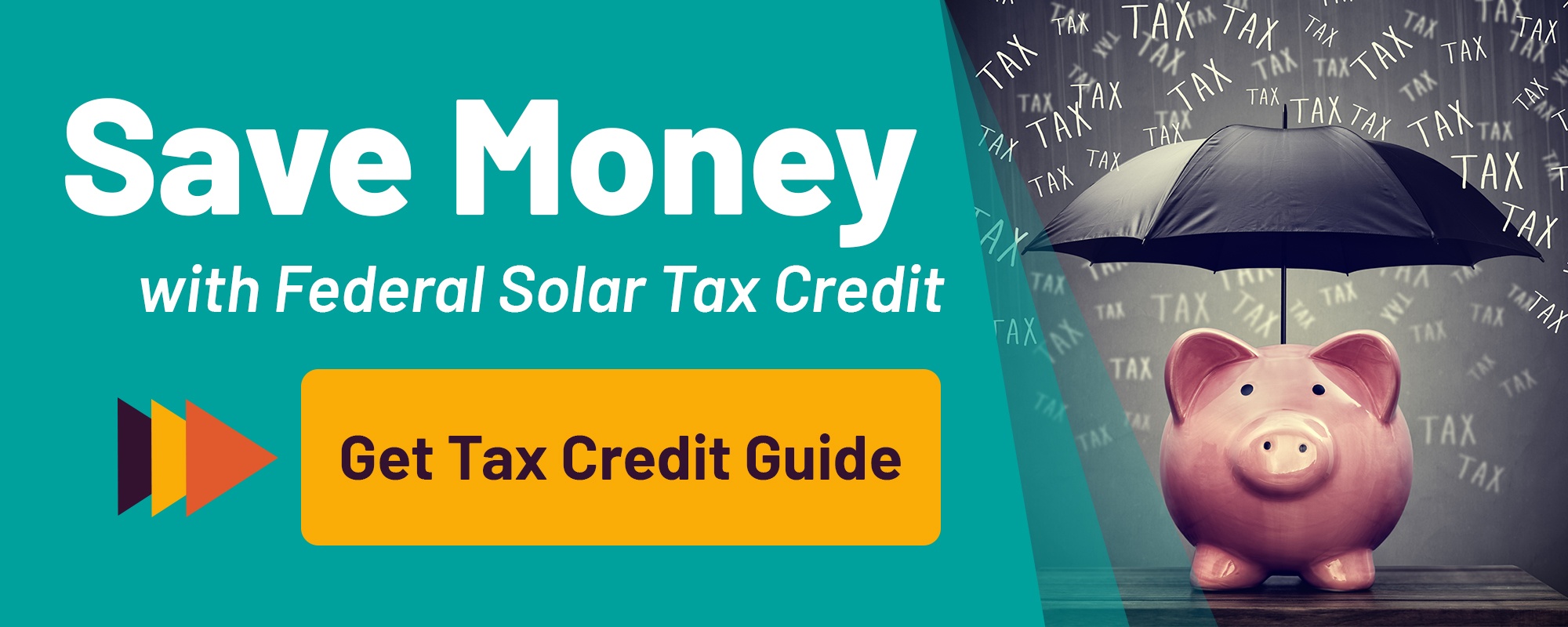Solar Panels 101: A Guide to Solar Energy and Systems
Welcome to Solar Power 101! On this page, we’ll go over the basics of solar energy and explain where to start if you want to buy a solar power system.
If you’re looking for a beginner’s guide to solar power, you’ve come to the right place. These are the most common questions we hear as we design and sell systems on a daily basis.
For those who want to do more extensive research, we’ll also link the most valuable solar resources we’ve found around the internet.
Table of Contents
Overview: General Solar Energy Concepts
- What is solar power?
- What are the parts of a solar energy system?
- What are the pros and cons of solar?
- What’s the difference between grid-tie and off-grid solar?
- What is net metering?
Solar Panels
- What are solar panels made of and how do they work?
- How long do solar panels last?
- How big are solar panels?
- What are the types of solar panels on the market?
- How is solar panel efficiency measured?
Inverters
- What does an inverter do?
- What is a micro-inverter?
- What is a string inverter?
- What are power optimizers?
Batteries
- Does my solar energy system need batteries?
- How does energy storage work with grid-tie systems?
- Which battery chemistry is best for solar? (FLA / SLA / Li)
Racking
- Ground mount or roof mount?
- What are pole mounts? Are they worth it?
- What are trackers? Are they worth it?
System Design Guidelines
- What size solar energy system do I need?
- What is string sizing?
- How does local climate impact system sizing?
Installation
Solar Cost / Return on Investment
Solar Financing
Owning Solar
Solar Resource Center
What is solar power?
The sun doesn’t just provide warmth and light – it’s also a source of energy.
Solar energy (or solar power) is the energy we generate from sunlight. Through a process known as the photovoltaic effect, we can convert energy from the sun’s rays into electricity that can power our TVs, refrigerators, lights and other appliances.
(The photovoltaic effect is what makes solar possible. Read more about how it works on Wikipedia.)
To generate solar energy for your home or office, you need a solar power system.
What are the parts of a solar energy system?
There are other key components to a solar system aside from the panels themselves.
To generate your own energy, you need a complete solar power system. The essential components:
- Solar panels, to capture energy from the sun
- An inverter, to convert that energy to a format that can power your appliances
- Racking, the foundation on which you mount your system
You also need a method to store the energy generated by the panels. If you have access to power lines, this doesn’t require additional equipment. It can simply be fed into the utility grid and used later.
But if you are off the grid, you’ll need additional parts:
- Batteries, to store the energy you generate
- Charge controller, to control the rate at which batteries charge from solar
These are connected by smaller components like wiring, fuses, and disconnects.
You can also add equipment to monitor your system’s output online, which helps troubleshoot any issues with shading or defective equipment.
What are the pros and cons of solar power?
Here are some reasons why you might choose solar over another source of power:
- Renewable: Sunlight is an infinite resource. It’s not like oil, which we remove from the Earth and spend when we use it. The sun’s rays can be harvested for energy over and over again without depleting the source.
- Lower Electric Bills: As a replacement for grid-tied properties (anywhere with access to power lines), solar power costs just a fraction of what you pay the utility company each month. A properly sized system can drop your electric bill to $0.
- Remote power: If you live in a remote location, it may be too expensive or impossible to run power lines to your house. Solar power systems generate energy when you can’t hook into the power grid.
- Improve Property Value: Homes equipped with solar systems sell for 3.74% more than equivalent homes without solar. Solar homes sell for $14,329 more on average. Read more about how solar impacts property values. Off-grid solar also enables you to buy affordable undeveloped property in rural areas.
Here are some drawbacks to consider before going solar:
- High up-front cost: Even small systems cost a few thousand dollars, and full-scale systems for a family home can reach a 5-figure price tag. Though it pays for itself in the long run, it can be prohibitively expensive to get started.
- Weather Dependent: Shade, snow and other obstacles reduce the output of your solar panels. If your panels don’t get a lot of sun, they won’t work as efficiently as advertised. You can buy equipment designed to mitigate this, but it costs more.
- Takes up space: Solar panels are over 3 feet wide and 6-7 feet tall depending on configuration. An average residential system might contain a few dozen panels. They take up a lot of space on your property, so you need to make sure you have somewhere to put them.
- Storage is expensive: Batteries are by far the most expensive part of a solar system. If you need them to store power (either off the grid or as backup for your grid-tied system), that will eat into your return on investment. They should be used out of necessity, or to provide peace of mind in areas with unreliable power.
Read more: “The Pros and Cons of Solar Power.”
What’s the difference between grid-tie vs. off-grid solar?
The first thing to decide when you go solar is whether you need a grid-tied or off-grid system.
Each has a distinct benefit:
Grid-tie systems save money on your electric bill. It’s less expensive than buying electricity from the utility company. We recommend this to everyone by default if they can connect to the utility grid. Always build a grid-tied system if you have access to power lines!
Off-grid solar is for delivering power to remote properties without easy access to power lines. They cost more (due to the addition of batteries), and the main value is delivering power to a remote location.
There’s a third system type as well, which is a hybrid of the first two: it connects to the grid, but also includes batteries. Solar companies refer to these as either battery backup or energy storage systems. There are two main benefits:
- Store backup power in case of outages (useful if you live in an area with an unreliable power grid or severe weather)
- Store energy so you can use it or sell it later (useful if you live in an area with time of use rates, high demand charges, or no net metering)
Energy storage systems provide extra peace of mind and get the most from the electricity you generate. It’s up to you to decide if it’s worth it to spend more on your system for the added flexibility.
What is net metering?
Grid-tie solar systems store the power they generate in the public utility grid. In return, the utility company credits your account for the power you generate. Those credits can be claimed to draw power from the grid when the sun isn’t out (at night or during poor weather).
Every utility company has their own policy which outlines the rates at which solar customers are credited and billed for power. This agreement is known as a net metering policy.
In many cases, the utility will buy and sell electricity at the same rate. But some utilities may buy power from solar customers at reduced rates, which has a real impact on the ROI of going solar. So it’s important to contact your utility and understand the terms of their net metering policy.
Read our net metering guide to learn more about how it works.
What are solar panels made of and how do they work?
Solar cells are made primarily from silicon, a chemical element with conductive properties. Exposure to light changes silicon’s electrical characteristics, which generates an electric current.
A cell is a small square of silicon (about 6” x 6”) with electrical contact plates on the face. Solar panels are made by laying out a grid of these cells on a protective backsheet and covering them with glass on the front.
It takes multiple panels to provide power to a typical home or office. A collection of panels in your system is called an array. Panels wired into the same inverter are known collectively as a string of panels. (Inverters have a maximum string size, an upper limit to the number of panels they can support.)
For example, you may have a system with two inverters supporting two strings of 10 panels each, which comes together to make a 20-panel array.
How long do solar panels last?
Most manufacturers guarantee under warranty that their panels will be at least 80% efficient for 25 years.
When the warranty is up, the panels don’t break down. They simply keep working at a reduced output. A panel that is rated at 300 watts, for example, would still produce 240 watts of output at the 25-year mark.
Panels tend to be extremely reliable. A study by NREL (National Renewable Energy Laboratory) showed that over 75% of panels outperformed their warranty.
However, other parts like inverters and batteries have a shorter lifespan. You should expect to replace these parts at least once over the life of ownership, and those replacements should factor into total costs over the life of the system.
Inverters are warrantied for 10-20 years. Expect to replace your inverter once or twice in your system’s lifespan.
If you include batteries with your system, those will also need to be replaced. Lead-acid batteries typically last 3-7 years depending on how well you maintain them. Lithium batteries are warrantied for 10-15 years.
Learn more in our article: “How Long Do Solar Panels Last?”
How big are solar panels?
Panels come in two standard configurations: 60-cell or 72-cell. If you want to know when you might choose one over the other for your solar project, read our breakdown of 60 vs 72 cell solar panels.
60-cell panels measure 39” by 65”, while 72-cell panels are 39” by 77”. In reality, these dimensions can fluctuate by up to an inch because manufacturers use different frame sizes. But the 60 and 72 cell layouts are standardized across the industry.
There are also smaller options for RV / mobile use, and some companies (like Panasonic) are experimenting with larger 96-cell panels, but these sizes aren’t common enough to be standardized at the moment.
Learn more: Solar Panel Size Guide
What are the types of solar panels on the market?
There are two established cell technologies that dominate the market: monocrystalline and polycrystalline solar cells (mono and poly, for short).
Mono cells are cut from a single source of silicon, while poly cells are made by blending multiple bits of silicon into a single cell.
Since the composition of poly cells is less “pure,” they tend to be slightly less efficient on average. However, this isn’t a hard and fast rule, since other factors affect solar cell efficiency as well.
In addition to mono and poly panels, there are several emerging technologies to keep an eye out for, like thin film and bifacial panels. Read our breakdown of solar cell technology to learn more.
How is solar panel efficiency measured?
The concept of solar panel efficiency is often misunderstood. Most panels have an efficiency rating in the range of 15-25%, which sounds really low without context.
Some people hear this and think, “wow, I only get 20% of the production from my panel? That sounds like a waste.” The assumption is a 100-watt panel would only produce 20 watts of power. But that’s not what we mean when we talk about efficiency.
In reality, the efficiency rating measures how much of the sun’s potential energy is converted to solar power. Using the same example, a 100-watt panel with a 20% efficiency rating will absorb 20% of the potential 500 watts of continuous power coming from the sun.
Don’t sweat too much about panel efficiency. The only real benefit to more efficient panels is that they fit more solar in less space.
High-efficiency panels matter if you’re trying to build in a tight space, but there’s nothing wrong with building a larger array with less efficient panels. The latter option typically reduces the overall cost of the system (because less efficient panels have a lower cost-per-watt, all other things being equal).
Learn more with our guide to solar panel efficiency.
What does an inverter do?
A solar inverter converts DC (direct current) into AC (alternating current).
Solar panels generate DC power, but most household appliances run on AC power. The inverter simply takes the energy you generate and turns it into a format that can power your electrical loads.
There are a few different types of solar inverters, each with their pros and cons.
What is a micro-inverter?
In micro-inverter systems, there is no centralized inverter. Instead, each panel is hooked up to its own micro-inverter.
In essence, every panel + micro-inverter pairing is like a self-contained solar system. Panels can be added or removed without impacting the performance of the rest of the system.
Due to this design, micro-inverters are a great way to start small and expand your system down the road. They also provide the same control and monitoring capabilities offered by power optimizers.
Our favorite micro-inverter is the Enphase IQ7+. Read our Enphase IQ7+ review for more info.
What is a string inverter?
String inverters are the simplest and least expensive option available. Strings (or groups) of panels are wired together in series, with each panel chained to the next. The last panel plugs into a string input on the inverter.
Due to how they are wired, each panel in the string is on the same circuit, which means each panel in the string performs at the same level. If the output of one panel drops (due to shading or malfunction), the rest of the string suffers production drop along with it.
Because of these limitations, we only recommend string inverters if your system is fully exposed to sunlight. If trees or other obstructions will cast shade on your panels, you’ll be better served with an inverter that includes power optimization technology to mitigate the production loss.
Our preferred string inverter is the SMA Sunny Boy series. Read our SMA Sunny Boy review to learn more.
What are power optimizers?
Power optimizers can be attached to your solar panels, allowing the system to control each panel’s output independently from the rest of the string. If a single panel under-produces, optimizers ensure the other panels in the string are not affected.
We recommend adding power optimizers to mitigate shade from obstructions and overcast weather. Our favorite pick in this category is the SolarEdge HD-Wave series. Read our HD-Wave review here.
Does my solar energy system need batteries?
Batteries are mandatory for off-grid systems and optional for grid-tie systems.
Every solar energy system needs a method to store the power generated by the panels. With grid-tie systems, you can feed that energy into the utility grid, essentially using the grid as a giant battery.
Under a net metering agreement, the utility credits you for anything you contribute, and you can use those credits to withdraw power from the grid whenever you need it. With the grid serving as an energy storage system, grid-tie systems don’t need batteries to function.
Off-grid systems are different. Without grid access, you need to store your own power, and that means batteries are mandatory. Off-grid systems are quite a bit more expensive due to the inclusion of batteries, but can still be cost-effective as an alternative to running power lines to a remote property.
How do batteries work with grid-tie systems?
Grid-tie systems don’t need batteries, but adding them still has its benefits. The main benefit is backup power in case the grid goes down (which can happen frequently in places with severe weather or unreliable power grids).
By default, grid-tie systems don’t protect against power outages. Since the system is hooked into the grid, it must be configured to shut down when grid power goes out. This is a safety measure to protect utility workers from coming in contact with live wires while they work on the grid.
By adding energy storage, your system can stash a small amount of backup power in a local battery bank to keep the lights on during an outage.
Batteries have other benefits as well. For example, they can store power temporarily and sell it back to the utility when time-of-use rates are higher, ensuring you sell power to the utility at peak rates.
Learn more: “Is Backup Power Right For You?“
Which battery type is best for solar—flooded, sealed or lithium?
Solar batteries fall into three main categories. From least to most expensive, they are:
- Flooded lead-acid (FLA)
- Sealed lead-acid (SLA)
- Lithium-Ion
Flooded lead-acid batteries use a tried-and-true technology that is more than 100 years old. They require monthly maintenance to stay operational. The main task is refilling the battery with distilled water, which evaporates during the charge cycle.
Sealed lead-acid batteries also use a lead-acid chemistry, but are sealed to prevent off-gassing. They are also maintenance-free, which removes the need for monthly checkups. Go with a sealed battery if you don’t mind paying a bit more for convenience.
Lithium batteries are the premium option. In addition to being maintenance-free, they charge faster, endure deeper discharge cycles, and have a longer lifespan. They cost the most up front, but could last 2-3 times longer than the other options.
We compare the most common solar battery choices in our lead-acid vs. lithium battery breakdown.
Ground mount or roof mount?
So where should you mount your panels?
Our default choice is to put them on your roof if you have room. Rooftop solar is less expensive to install because the support beams act as a foundation for the mounting hardware. You save on materials and labor because you don’t need to build a substructure to hold the weight of the array.
The alternative is a ground mount—a standalone metal or aluminum framework built somewhere on your property to mount the solar array. Ground mounts cost more because you have to buy the pipe for the frame, but they are easier to access for maintenance and repairs (no climbing on your roof).
For help making the right choice, read our comparison of the pros and cons of ground mount vs. roof mount racking.
What are pole mounts? Are they worth it?
A pole mount is simply a tall pole that lifts your solar array higher off the ground than a traditional ground mount.
Pole mounts are great for snowy climates. The elevated mount gives the array extra clearance, so the array doesn’t get buried in a snow bank during the winter.
Pole mounts can also be tilted at a steeper angle, which helps snow buildup slide off the face of the panels, keeping them free of obstructions and producing closer to their peak output.
What are solar trackers? Are they worth it?
Trackers are mounts that automatically follow the sun’s position in the sky to maximize the production from your panels.
Does it sound like a great idea? Sure! Should you buy one? Almost never, no.
The reason is simple: tracking hardware costs more than the solar panels themselves! if you need more production, just add a few more panels to your array—it’s far more cost-effective.
The one exception is large commercial or industrial projects. The hardware gets cheaper on a very large scale, and commercial projects sometimes don’t have the land available to reach 100% energy offset.
Solar trackers may make sense in this particular scenario, but they certainly aren’t right for most customers.
What size solar energy system do I need?
Your system size depends on your energy usage, which is measured in kilowatt-hours. You can find this info on your electric bill, or in your online account with your utility provider.
Sizing is a complex process, but fortunately there are plenty of online tools to help you out.
For grid-tie systems, the quickest way to get an estimate is to use our solar calculator. Punch in your location and energy usage data and let us do the rest. We’ll give you a target system size and show you a few kits that might suit your needs.
For off-grid systems, tally your daily energy usage on a load evaluation sheet, then use our off-grid solar calculator to hone in on a target system size.
Prefer to run the numbers yourself? Read our guides for a step-by-step walkthrough:
What is string sizing?
A panel string is a group of panels wired into a single input on your inverter. Because the inverter has a voltage input limit, part of the system design process is calculating the ideal string size to maximize production without overloading the inverter.
String sizing depends on factors like local temperature and the specs of the products you use. Check out our string sizing walkthrough to learn how to calculate the ideal string size for your system.
Not a big math fan? Don’t worry, our system packages are designed with ideal string sizing in mind. If you need a custom system, you can always request a free consultation with our design team.
How does local climate impact system sizing?
It shouldn’t come as a surprise that solar performs better in sunny climates. Some regions get more sun hours per day, which gives your system a bigger window each day to hit peak production.
Most regions in the US get 3-6 sun hours a day, which is quite a bit of variation. A system built in Seattle, WA needs to be nearly twice as large as a system built in Arizona to produce the same amount of power!
That said, solar is still quite effective in less than ideal climates. Take a look at this case study submitted by our customer Dave, who shares observations and production data 5 years after going solar in the Frozen Tundra of Wisconsin.
How much does it cost to hire a solar installer?
Professional solar installers charge a wide range of rates based on a number of factors. The #1 factor driving the cost of installation is the availability of qualified installers in the region. Rates will be lower in a place like Los Angeles, with several qualified installers competing for business.
As a benchmark, we find that most reputable solar installers charge 75 cents to $1.25 per watt of solar for their labor.
On a 5kW system, you should expect to pay $3,750 to $6,250 for a professional solar installer’s services. (This fee is just for labor—it does not include the cost of equipment.)
Can I install solar myself?
Yes! Installing your own solar panels is certainly possible, even if you don’t have prior DIY experience. Most solar components are plug-and-play, meaning every cable snaps into a dedicated port. If you can perform basic tasks like lifting heavy objects and tightening screws, you’ve got what it takes to install your own system.
The most challenging bit is performing the final electrical hookup to the service panel. Some DIYers choose to hire a licensed electrician
And you still come out way ahead on costs compared to a professional installation.
Take a look at our DIY Solar hub for a step-by-step overview of how to install your own solar system.
What tax credits and incentives are available for going solar?
The major incentive for going solar is the Federal Tax Credit. Under this credit, 30% of your project costs (including installation) go toward a credit to offset your tax burden when you file with the IRS.
For more info, read our primer on how the federal solar tax credit works.
In addition to the federal credit, there are state and local credits in many regions which add even more incentive for going solar. To research local credits in your area, visit our state solar incentives page.
Is solar energy a sound investment?
In most cases, solar energy costs less than what you pay the public utility for electricity. Let’s do the math.
The utility company bills you for electricity. The national average is about 12 cents per kilowatt hour (kWh) of electricity used.
A kWh is simply a measurement of how much electricity you use. You can check your energy bill to find out how much you use each month in your household.
(Rather have someone do the math for you? Visit our solar cost calculator to run the numbers.)
If you use 1,000 kWh / month billed at 12 cents / kWh, the power bill comes to $120 every month. That’s $1440 per year.
Now let’s look at how to get that done with solar. We’d recommend something like this 7.8 kW system, currently listed for $9,791 at the time of publication. It would cover 100% of the energy usage outlined above.
The federal tax credit shaves 30% off the purchase price, so you pay $6,853.70 for the equipment. (To claim the credit, you must owe taxes. Read about the details here.)
By generating your own power, you get to pocket $1440 every year that you are paying to the utility every year. After 4.76 years, you break even on savings. This is known as the “payback period” – how long it takes for your system to pay for itself.
Lastly, panels are warrantied for 25 years. Over the life of the warranty, the system pays back your investment 4 or 5 times.
Not only is solar energy good for the environment, but it also makes financial sense.
What solar financing options are available?
There are three common approaches to secure financing for your solar system. In order from highest to lowest value, they are:
- Personal Loan
- Solar Lease
- Solar PPAs (Power Purchasing Agreements)
A personal loan will typically have the lowest interest rate. In addition, taking out a loan to buy the system means you own it yourself. Owning the system allows you to claim the Federal Tax Credit for going solar. That 30% kickback when you file your taxes can help you pay back your loan ahead of schedule.
Solar leases and PPAs have lower ROI because the installer owns the system, which means they have the right to claim the Federal Tax Credit for themselves.
How do solar leases / solar PPAs work?
Under a solar lease agreement, the solar installer builds a system on your property, but they still own the equipment. It is the installer (not you) who gets to claim the Federal Tax Credit and any local incentives. The installer rents the equipment to you for a monthly fee, and you get to use 100% of its production regardless of how much power it generates.
Power purchasing agreements (PPAs) are similar to leases. The solar installer builds a system on your property and claims the tax credit. The only difference is that instead of renting the equipment, you pay a flat rate for the power you use.
Both PPAs and leases lag quite a bit behind personal loans in terms of lifetime value. Visit our solar financing page to compare all three options in depth.
Do solar systems require maintenance?
Solar panels require very little maintenance. Most of it is centered around clearing debris off the panels, which would block sunlight from hitting the solar cells and hinder production.
In cold climates, snow can pile up on your panels. Use a soft brush or broom to wipe them down without scratching the glass surface.
Same goes for dry climates where dust can settle on the panels. It’s a good idea to wipe down the panels a few times a year to clear off dust and debris. In more temperate climates, once a year is probably fine.
That’s about all there is to it. Solar panels are very durable because there are no moving parts, so there’s very little maintenance on the mechanical and electrical systems. If you keep panels clear, your system needs very little oversight.
How does solar impact the value of my home?
A 2017 study suggests that solar homes sell for 3.74% more than comparable non-solar homes. That comes out to about $15,000 more on average for homes evaluated in the study.
Solar is a major selling point, so long as the homeowner owns the solar system. Leased systems are a different story, as the home buyer must agree to take on the contract and lease payments from the solar installer.
We took a deep dive into the study to see what else we could learn. Check it out here: “Do Solar Panels Increase Property Value?”
More Solar Resources
Designing a solar power system is a complex process. Fortunately, there are plenty of great tools and resources out there to guide you down the right path.
In addition to our own resource center, we recommend the following sites for high-quality information.
Consumer Education
Solar Power Rocks
https://www.solarpowerrocks.com/
These folks produce a wide range of articles, infographics, videos and tools designed to teach the residential customer everything they need to know about buying a solar system. Their content is always neutral and incredibly thorough.
When you’re ready to buy, you can check their installer database to find a trusted installer in your area.
EnergySage
Another fantastic website filled to the brim with helpful guides and resources for the prospective solar shopper. Use their tool to field and compare quotes from local installers to find the best deal available.
Solar Power World
https://www.solarpowerworldonline.com/
Solar Power World does a great job of covering new products, trends, and world news impacting the solar industry.
Greenmatch UK
Greenmatch wants to help you transition to renewable energy and other green solutions for your home. Solar is a major focus, but they also review energy efficient windows, pumps, boilers and other equipment that can reduce your power consumption.
Solar Industry Research & Reporting
DSIRE USA
DSIRE stands for Database of State Incentives for Renewables & Efficiency. It is a federally backed database that tracks renewable energy incentives in all 50 states. It also tracks any local policies and laws that will impact your solar project (like permitting, code compliance and so on).
NREL (National Renewable Energy Laboratory)
NREL is a government research center with 18 research programs that produce over 1,000 scientific and technical reports every year.
They are without a doubt the organization that produces the most original research and data-driven analysis in the renewable energy space. This is the best place to find historical data on pricing trends and reports on the health of the industry.
SEIA (Solar Energy Industries Association)
SEIA is the national trade association for solar industry professionals in America. You don’t need to be a member to use their site, which has valuable resources like a state-by-state breakdown of solar incentives and a national database of solar companies.
Energy.gov’s Homeowner’s Guide to Going Solar
https://www.energy.gov/eere/solar/homeowner-s-guide-going-solar
If you own your home and want to go solar, energy.gov has a fantastic list to guide you through all the questions you’ll need to ask before committing to a purchase.
Solar Industry News
These sites do a fantastic job of reporting on new technologies, mergers and acquisitions, pricing trends, and other solar industry news. They’re like the New York Times of the solar world. Take a look if you want to keep up on the latest news and trends in the industry.
Calculators and Tools
- Solar Cost Calculator – Estimate the cost to go solar, and see how much you can save from reduced energy bills and incentives over the life of your system.
- Voltage Drop Calculator – All electrical systems suffer a natural loss in voltage due to resistance as the current flows through conduits and wires. Our voltage drop calculator helps you compensate for this natural inefficiency in your system.
- Off-Grid Load Evaluation Sheet – Need to calculate energy usage for your off-grid property, but don’t have a bill to reference? Input your daily usage patterns into our load evaluation calculator to get an accurate estimate. This is the first step to sizing off-grid solar systems.
- PVWatts – The PVWatts calculator helps you determine what size system you might need to cover your energy needs. Through experience, we’ve found their estimates tend to be on the conservative side—real world systems often outperform PVWatts estimates by 10-15%. That said, this tool is still really useful to get a monthly breakdown of production estimates, so you can see how output might fluctuate as the seasons change.
